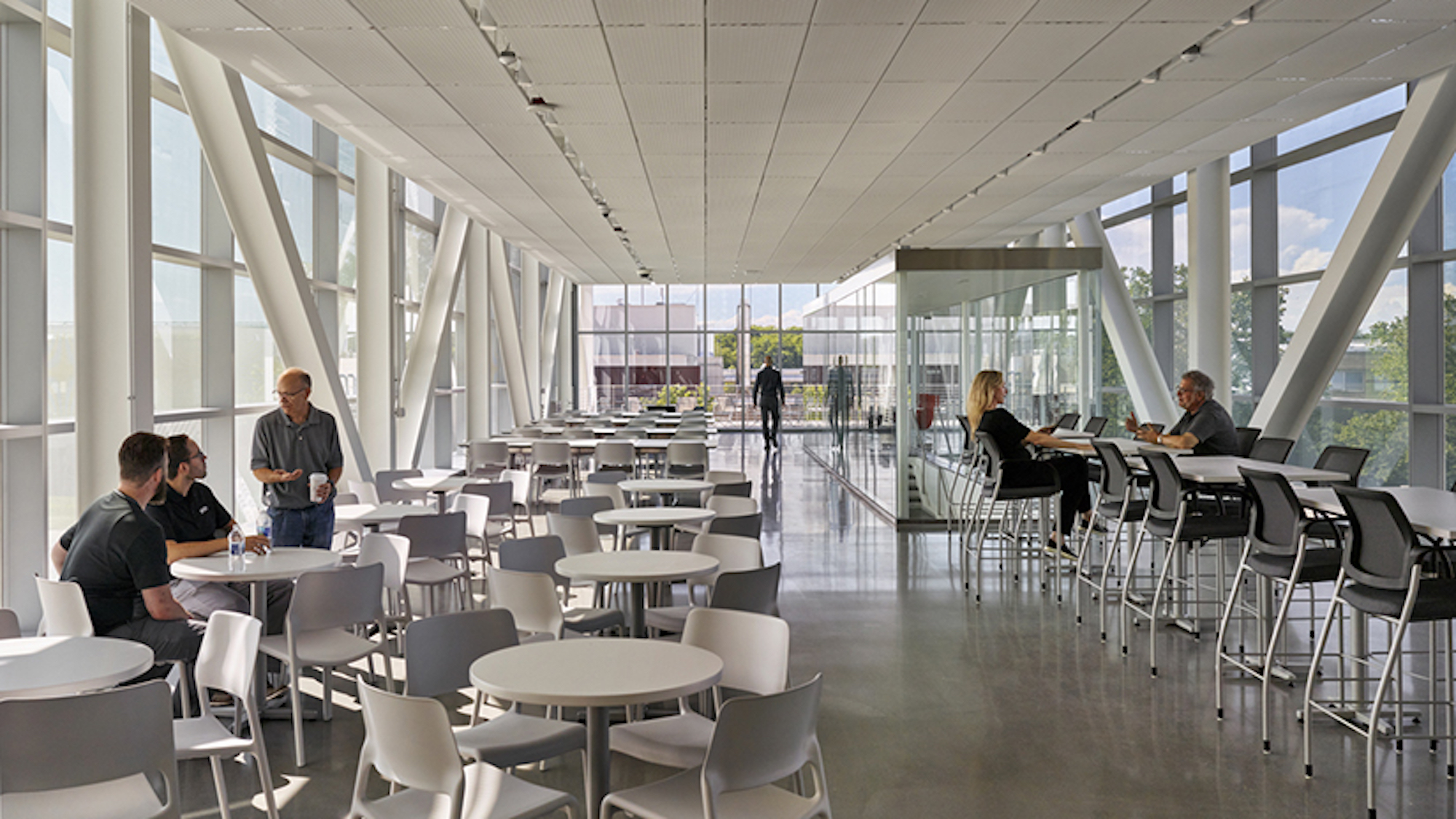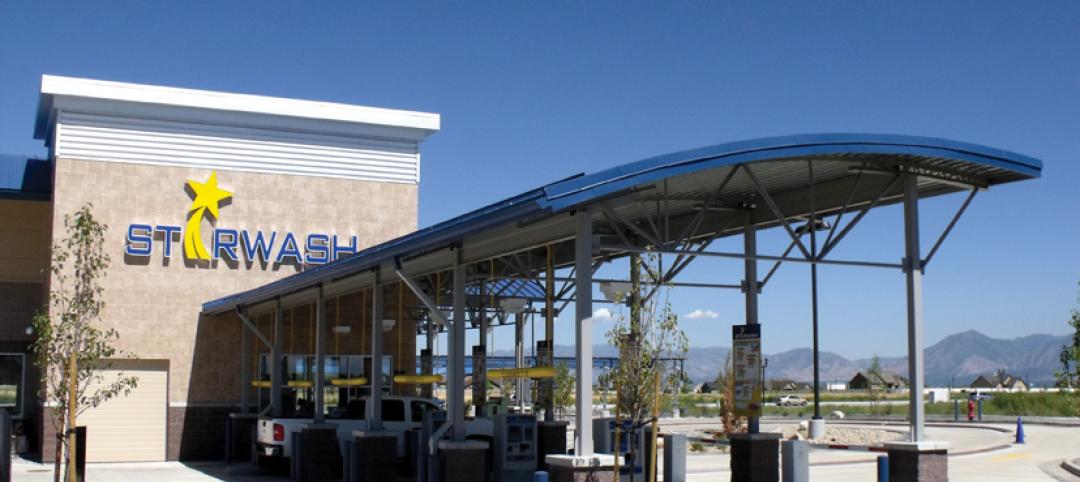Last year, IMEG Corp. made six acquisitions that bumped up its office count to more than 60 locations with 1,600 employees. SSOE Group implemented a horizontal organization management structure that bases upward mobility on operational performance and is scaled for growth. Specialized Engineering Solutions added an office in Indianapolis, hired 22 new staffers, and firmwide completed more than 500 projects and worked with 25 new clients.
Last year and the early months of 2022 were periods of expansion and activity for many engineering giants, whose cohort continued to add new markets and practices through mergers, acquisitions, and organic growth. Engineers developed tools that improve designing, workflow management, and reducing the carbon footprint of buildings. And in the wake of COVID, a sizable number of engineering firms cite their health and safety protocols among their accomplishments last year.
Technology continued to change the game for expansion-minded engineering firms, be it CDM Smith’s embrace of digital twin for its utilities and private-sector clients, or Henderson Engineers (in collaboration with EvolveLAB) developing a ductwork automation tool that significantly reduces design time. The RHM Group started using LiDAR scans for more complex retrofits to cut down on field time, while Kimley-Horn honed its Advanced Air Mobility modeling capabilities for the aviation sector in anticipation of the coming wave of battery-powered vertical flight.
Burns & McDonnell has been deploying solar pile drivers that transmit engineering plan data through GPS technology to align a pile on a precise spot and drive it to the exact depth needed. WSP last year began integrating Web-based technologies into its engineering workflows. “This opens another avenue into the model database for analysis, compliance checking, etc.,” stated the firm, which claims to have more than 30 tools in the works.
KLH Engineers, through a licensing deal with Trimble MEP, started marketing its own proprietary software for engineering building design. The product is called SysQue Model Manager. And Paradigm Structural Engineers has been assisting clients to incorporate passive energy dissipation devices into new buildings to mitigate business interruptions for pharmaceutical manufacturing and data centers.
ALSO SEE:
- 2022 Architecture Giants Trends Report: What’s new at 173 architecture firms
- 2022 Contractor Giants Trends Report: U.S. construction firms lean on technology to manage growth and weather the pandemic
Technology in the form of prefabrication and modular design also found more engineering advocates. Working with the GC Swinerton, Walker Consultants launched Perq, a predesigned, pre-engineered, customizable parking solution that customers can buy as a product. Starting in 2022, NORR has engaged in design projects to support rapid deployment facilities with modular construction that abets aggressive scheduling, increases quality, and reduces cost.
Engineering firms grow by addition
Several engineering giants entered new practices last year. SSOE, for one, started aggressively pursuing manufacturing projects, especially those related to electric vehicles; it is currently engaged in more than 20 EV projects in the U.S. and Mexico. KCI Technologies, which acquired three companies in Texas, Florida, and the East Coast, also expanded its internal structure to include a technology- and innovation-focused market, as well as a vertical construction management practice. And PBS Engineers expanded into technology design and commissioning services.
Some expansion took the form of investment: Affiliated Engineers has been investing strategically in a comprehensive resilience planning consultation program that engages owners and is supported by integrated design. Affiliated also invested in a process engineering design studio to support new and upgraded manufacturing facilities, and grew its industrial test market that supports design of complex battery research and production.
Syska Hennessy Group launched Syska Innovations, a subsidiary that invests in seed-stage companies, pilots their software and products, and nurtures their development within the firm.
Engineering firms typically expand with an eye toward cracking into new markets or practices. Last year was no different, as many firms plowed new fields, both organically and through acquisition. For example, Tower/Pinkster said it “drastically expanded” the reach of its offices in Indiana and Kentucky by acquiring Kovert Hawkins Architects. With its acquisition of South Carolina-based SGA/NW, the AE firm Greenberg/Farrow hoped to broaden the combined company’s multifamily presence in the Southeast.
When the CE firm Integrated Project Services acquired Linesight, it tapped into a Dublin-based multinational with 900 employees in 24 offices that provide project controls to data center providers, life sciences companies, commercial real estate, healthcare, hospitality, retail, and residential sectors. This acquisition doubled IPS to nearly 2,800 employees and 45 offices.
Dewberry—which shifted many of its commercial projects into a model that maximizes design, material selection, construction, and occupancy efficiencies—acquired Edmonds Engineering, a 75-person MEP specialist with five offices in the Southeast. Dewberry also opened a new office in Philadelphia, and grew its architecture practice in California.
Goodwyn Mills Cawood, an AE firm, doubled the size of its Aviation team by adding Franklin, Tenn.-based PDC Consultants. Last January, the firm acquired Nashville-based Binkley Garcia Architecture, which specializes in educational, commercial, and church architecture. And last April, GMC bought Florida Disaster Consulting, which expanded its regional disaster recovery services and capabilities.
With the help of the U.S. Commercial Service and the U.S.-Saudi Business Council, the engineering firm P2S brought its commissioning management services to Saudi Arabia via a Memorandum of Understanding agreement with Saudi Engineering Group. This pact allows P2S’s commissioning agents to review design documents and create checklists remotely from the firm’s West Coast offices. (P2S is based in Long Beach, Calif.)
Engineering firms embrace environmental stewardship
Last year, more engineering giants started paying closer attention to the sustainability and carbon footprint of their buildings. Notable was Arup’s “Changing the Game” program, an R&D investment that challenges its teams to develop tools, services, and products that “prepare us for a net-zero future.” Over the past year, more than 70 projects have received $1 million in funding under this program.
To help its clients comply with Boston’s Building Energy and Reporting Ordinance 2.0, AFK developed a Web-based tool that allows the user to input annual utility information and building characteristics to generate emissions thresholds and resulting estimated penalties. Another firm, Mazzetti, beta tested an app called M+Carbon that empowers the client with data visualization of carbon emissions—the sources, degrees of severity, and opportunities for improvement.
Morrison Hershfield contributed to the launch of the Embodied Carbon Pathfinder, a free app for quickly estimating cradle-to-grave whole building life cycle assessment results for multifamily buildings. That firm also launched its Climate Change Initiative, whose goals include identifying climate change vulnerability and risk, and reducing embodied and operational carbon from building and infrastructure projects. Thornton Tomasetti—which was the structural engineer on Ascent in Milwaukee, the tallest mass timber building in the world—developed a new cross-laminated timber floor that seeks to reduce embodied carbon where it’s most prevalent in buildings.
Expertise and reputation are the name of the game here. STV has positioned itself as a leader in zero-emissions bus planning through the development of its Performance Evaluation of Electric bus Routes (PEER) modeling tool. The AE firm NORR even produced a blog series and eBook titled, “Our Journey to Carbon Neutrality.” And EYP Mission Critical Facilities has been working with its data center clients to come up with renewable design alternatives that lead to better energy efficiency.
It’s all about talent in the U.S. engineering sector
As they have expanded, reorganized, or shifted gears, quite a few giants made important personnel changes and additions that sometimes reflect a new mindset, like Henderson Engineers—which last year became 100% employee-owned—hiring its first sustainability director. In an industry cohort where males dominate the C-suite, it’s still news when SSOE hired its first female president Catherine Myers; SSR announced Susan Osterberg as its new COO; and Bala Consulting Engineers promoted CFO Kim Burkert to CEO, the first woman to assume that post in the company’s 40-year history.
Several firms have been hiring and promoting aggressively. Highland Associates added five principals in support of its succession plan. Karpinksi Engineering hired 22 employees last year and planned to add another dozen this summer. H.F. Lenz, which celebrated its 75th anniversary last year, had 19 new hires. CMTA expanded its engineering capabilities with acquisitions in the Upper Midwest and Texas that added 135 people.
VIEW THE 2022 GIANTS 400 RANKINGS BY AEC DISCIPLINE
A. Top 180 Architecture Firms
B. Top 110 Architecture/Engineering (AE) Firms
C. Top 80 Engineering Firms
D. Top 45 Engineering/Architecture (EA) Firms
E. Top 200 Contractors
F. Top 90 Construction Management Firms
See more 2022 Giants 400 Rankings
Related Stories
| Mar 11, 2011
Construction of helicopter hangars in South Carolina gets off the ground
Construction is under way on a $26 million aviation support facility for South Carolina National Guard helicopters. Hendrick Construction, the project’s Charlotte, N.C.-based GC, is building the 111,000-sf Donaldson Hangar facility on the 30-acre South Carolina Technology & Aviation Center, Greenville.
| Mar 11, 2011
Texas A&M mixed-use community will focus on green living
HOK, Realty Appreciation, and Texas A&M University are working on the Urban Living Laboratory, a 1.2-million-sf mixed-use project owned by the university. The five-phase, live-work-play project will include offices, retail, multifamily apartments, and two hotels.
| Mar 11, 2011
Chicago office building will serve tenants and historic church
The Alter Group is partnering with White Oak Realty Partners to develop a 490,000-sf high-performance office building in Chicago’s West Loop. The tower will be located on land owned by Old St. Patrick’s Church (a neighborhood landmark that survived the Chicago Fire of 1871) that’s currently being used as a parking lot.
| Mar 11, 2011
Community sports center in Nashville features NCAA-grade training facility
A multisport community facility in Nashville featuring a training facility that will meet NCAA Division I standards is being constructed by St. Louis-based Clayco and Chicago-based Pinnacle.
| Mar 10, 2011
Steel Joists Clean Up a Car Wash’s Carbon Footprint
Open-web bowstring trusses and steel joists give a Utah car wash architectural interest, reduce its construction costs, and help green a building type with a reputation for being wasteful.
| Mar 10, 2011
How AEC Professionals Are Using Social Media
You like LinkedIn. You’re not too sure about blogs. For many AEC professionals, it’s still wait-and-see when it comes to social media.
| Mar 2, 2011
Design professionals grow leery of green promises
Legal claims over sustainability promises vs. performance of certified green buildings are beginning to mount—and so are warnings to A/E/P and environmental consulting firms, according to a ZweigWhite report.
| Mar 2, 2011
New ASHRAE standard may be too broad for the Canadian market
New Standard 189.1 from the American Society of Heating, Refrigeration, and Air-conditioning Engineers (ASHRAE), which goes beyond energy efficiency to include provisions that affect construction, post-occupancy monitoring, and site control, may be too much for the Canadian market—at least for now.
| Mar 2, 2011
How skyscrapers can save the city
Besides making cities more affordable and architecturally interesting, tall buildings are greener than sprawl, and they foster social capital and creativity. Yet some urban planners and preservationists seem to have a misplaced fear of heights that yields damaging restrictions on how tall a building can be. From New York to Paris to Mumbai, there’s a powerful case for building up, not out.
| Feb 24, 2011
New reports chart path to net-zero-energy commercial buildings
Two new reports from the Zero Energy Commercial Buildings Consortium (CBC) on achieving net-zero-energy use in commercial buildings say that high levels of energy efficiency are the first, largest, and most important step on the way to net-zero.













